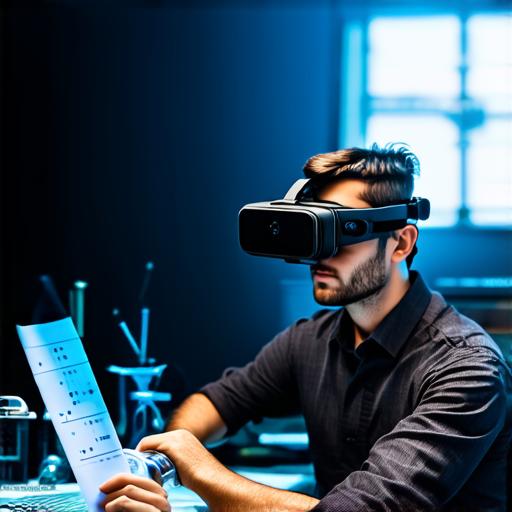The Early Days of Virtual Reality
Virtual reality can be traced back to the early days of computing when researchers began experimenting with ways to create immersive simulations. In 1962, Ivan Sutherland, a computer science professor at MIT, created the first virtual reality system called “Sword of Damocles.” This system consisted of a head-mounted display and a motion tracking system that allowed users to look around in a simulated environment.
The Rise of VR Headsets

In the 1980s and 1990s, virtual reality technology took a major leap forward with the development of specialized headsets. These early VR headsets were bulky and expensive, but they offered a more immersive experience than previous systems.
One of the most influential VR headsets was the VPL DataGloves, developed by Tom Furness in 1983. The DataGloves allowed users to interact with virtual environments using hand gestures, making it easier to navigate and interact with digital worlds.
In the following decade, several companies entered the market with their own VR headsets. One of the most successful was the Sega Genesis, which featured a built-in VR system called “Virtual Reality Arcade.” The Genesis was a game console that could also be used for virtual reality experiences.
The Oculus Rift and HTC Vive
In 2012, the Oculus Rift was released, marking a major turning point in the virtual reality industry. The Rift featured a high-resolution display, advanced motion tracking, and a comfortable design that made it easier for people to use for extended periods of time.
The following year, the HTC Vive was introduced, offering even more advanced features than the Oculus Rift. The Vive featured a room-scale environment, allowing users to move around freely in a virtual space. It also had built-in hand tracking, making it easier for people to interact with digital worlds using natural movements.
Both the Oculus Rift and HTC Vive have been incredibly successful, with millions of units sold worldwide. They have paved the way for future virtual reality systems and have inspired a new generation of developers to create immersive experiences that were previously impossible.
The Future of Virtual Reality Headset Invention
As virtual reality technology continues to evolve, we can expect to see even more advanced headsets in the future. Some of the key trends include:
- Wireless VR headsets: With advancements in wireless technology, it is now possible to create VR headsets that do not require cables or wires to function. This makes it easier for people to move around and interact with virtual environments without being constrained by cords.
- High-resolution displays: As display technology continues to improve, we can expect to see VR headsets with even higher resolution displays. This will make digital worlds look more realistic and immersive than ever before.
- Eye tracking: Some VR headsets are already beginning to incorporate eye tracking technology, which allows the system to track where the user is looking in real time. This can be used to create more realistic and personalized virtual experiences.
- Haptic feedback: As our sense of touch becomes more integrated into digital worlds, we can expect to see VR headsets that provide more advanced haptic feedback. This will make it easier for people to feel like they are truly in a virtual world.
Summary
The history of virtual reality headset invention is a fascinating journey that has taken us from simple cardboard boxes to advanced systems that simulate full immersion.
